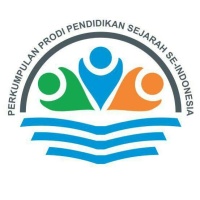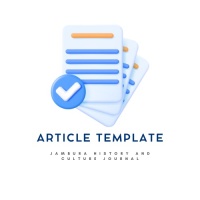IDENTIFIKASI POTENSI WISATA BERDASARKAN KONSEP OPEN-SITE MUSEUM : STUDI KASUS SITUS KERTO PLERET
Abstract
Keywords
Full Text:
PDFReferences
Adrisijanti, Inajati. 2000. Arkeologi Perkotaan Mataram Islam. Yogyakarta: Jendela.
Alifah & Hery. Benteng Kraton Pleret : Data Historis dan Data Arkeologi. Yogyakarta: Berkala Arkeologi, Vol 32, edisi No 2/November 2012.
Anholt, S. (2010). Definitions of place branding - Working towards a resolution. Place Branding and Public Diplomacy, 1-10.
Bontekoe, Ronald. 2000. Dimensions of the Hermeneutic Circle. Amherst, NY: Humanity Books.
Damanik, Janianton & Weber, Helmut. F. 2006. Perencanaan Ekowisata: dari Teori ke Aplikasi. Yogyakarta: Andi Offset
De Graaf, H. J. 1987. Disintregasi Mataram Dibawah Mangkurat I. Terjemahan Bahasa Indonesia. Jakarta: Pustaka Grafiti Press
Della Corte V., Aria, M. & Gaudio, G.D. 2017. Smart, open, user innovation and competitive advantage: a model for museums and heritage sites. UK: Museum Management and Curatorship, Vol. 32 No.1, Hal. 50-79.
Hausenschild, Andrea. 1998. Claim and Reality of New Museology: Case Studies in Canada, the United States and Mexico. Disertasi Doktor Hamburg University.
Lexy J. Moleong, (2006). Metodologi Penelitian Kualitatif. Bandung: PT Remaja Rosdakarya.
Magetsari, Noerhadi. 2008. Filsafat Museologi. Museografia Vol. II, No. 2. (5-15)
Makmur, R. T. (2015). Inovasi & Kreativitas Manusia Dalam Administrasi Dan Manajemen. Refika Aditam.
Paardekooper, Roeland. 2020. The Story of Your Site: Arhcaeological Site Museums and Archaeological Open Air-Museum. Exarc Journal Vol 4.
Raswaty, Retno. 2009. Konsep Museum Situs dan Open-Air Museum Indonesia Tinjauan Kasus pada Taman Onrust, Museum Kepurbakalaan Banten, dan Taman Mini Indonesia Indah. Tesis Arkeologi FIB UI.
Shehata, Ahmed M. Abd El-Rahman & Mohsen Mohamed Ibrahim Mostafa. Open Museum as a Tool for Culture Sustainability. Procedia Environmental Sciences. Vol 37, 2017. 363-373.
Sjaida, Gheya Madinatu; Khadijah, Ute Lies Siti; Novianti, Evie. Strategi Komunikasi Pariwisata Taman Air Mancur Sri Baduga Melalui Media Instagram @Urangpurwakarta. Jurnal Master Pariwisata (JUMPA), [S.l.], p. 386 - 410, jan. 2021. ISSN 2502-8022.
Soekadijo, R. G. (2000). Anatomi Pariwisata. Jakarta: Gramedia Pustaka Utama. Jakarta: Gramedia Pustaka Utama
Supratikno. Beberapa Permasalahan Pelestarian Kawasan Cagar Budaya dan Strategi Solusinya. Yogyakarta: Jurnal Konservasi Cagar Budaya Borobudur, Vol 7, No 2 /Desember 2013, hal 4-17.
Suryanagara,K.P.A., Tanpa Tahun. Serat Babad Momana. Naskah ketikan koleksi Badan Penerbit Soemodidjojo Maha Dewa. Tidak Terbit.
Van Mensch, Peter. 2003. Museology and management: enemies or friends? Current tendencies in theoretical museology and museum management in Europe. Makalah sebagai key note speech dalam konferensi Japanese Museum Management Academy, 7 Desember 2003 di Tokyo.
Wany Raharjo & Kuswanto. 2014. Kajian Konsep Open-Air Museum: Studi Kasus Kawasan Cagar Budaya Trowulan. Yogyakarta: Berkala Arkeologi Vol. 34. Edisi No.1 Mei 2014: 65-84.
Yoeti. OKa H. 2007.Pengantar Ilmu Pariwisata. Jakarta: Penerbit Angkasa
Zhang & Light. 2024. Exploring the inherent Conflicts of the Site Museum. The International Journal of the Inclusive Museum. Vol 17, Issue 1, 2024.
DOI: https://doi.org/10.37905/jhcj.v5i1.25835
Refbacks
- There are currently no refbacks.

Jambura History and Culture Journal (ISSN Online: 2686-1070 | ISSN Print: 2654-6388) is licensed under a Creative Commons Attribution 4.0 International License.











